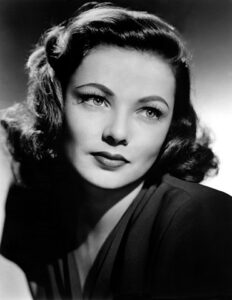Arthur Schopenhauer‘s criterion for a good novel is not the amount of action in it, but rather how well it reveals the inner life of the characters. The same criterion should also apply to films. Yet, in our time, the most popular movies are almost all action, as if the producers had neglected to hire a scriptwriter until the very end. Many scenes are extended battles between CGI characters which, by definition, have no inner life.
Hearing is the most subtle sense so it leads us closer to ultimate reality. In Schopenhauer’s understanding, the noumenon, or hidden reality, cannot be known through the senses. Yet most people believe “seeing is believing”, but sight is secondary. It merely creates a representation of reality, rather than reality itself. In the olden days, filmmakers took advantage of voice overs to reveal the thoughts of the characters. The motivations drove the plot and the resolution came when conflicting motivations were resolved. There were no mock battles nor extended martial arts fights between the protagonist and antagonist.
The film Laura is like that. Voice overs expose the thoughts of the detective. Artifices like letters and diaries are used to give us a glimpse into Laura. The columnist won’t stop talking about himself and the aunt discusses her amoral life choices.
As a young piano student, I learned to play the theme song from the movie; I loved to play it over and over. I have also watched the movie several times, and again last week. It is considered one of the 10 best mystery films of all time.
Carl Jung praised the novel She for its insights, and Laura is of the same genre. Laura, like She, had that rare combination of intelligence, beauty, and brashness that made “men desire her and women envy her.” As such, she draws attention that will lift her out of her office job into the world of the rich and powerful. Shelby, as the Senex, is a columnist — the equivalent of a blogger today — who used the power of his words to make and destroy reputations. He introduced Laura into a world of glamour and money.

A rival for her affection was the gigolo Shelby, the Puer Aeternus. The Crone, her wealthy aunt Ann, confessed to Laura that she was amoral. Into the mix was Diane, a model, who just complicates the various relationships which arouse jealousy. A woman was murdered in Laura’s flat by a shotgun blast to her face. Initially, it was assumed that Laura was the murdered woman.
Mark, the police detective, becomes obsessed with finding Laura’s murderer. He becomes infatuated with Laura’s portrait on the wall at her flat. He reads through all her letters and secret diary. He even spends a night at her flat where he was interrupted by her sudden unexpected return. When he realizes that Laura was not murdered, the focus of the investigation changes. Was Laura the target, in which case who wanted her dead? Or was Diane the intended victim?
Laura’s relationships with the Senex and Puer disintegrate, as she falls in love with Mark, her Animus, the strong man in her life who knows her secret thoughts intimately. Of course, the killer is revealed and we wonder about Laura’s future.
[youtube “https://www.youtube.com/watch?v=b-QtnIaG0xE”]
Leave a Reply